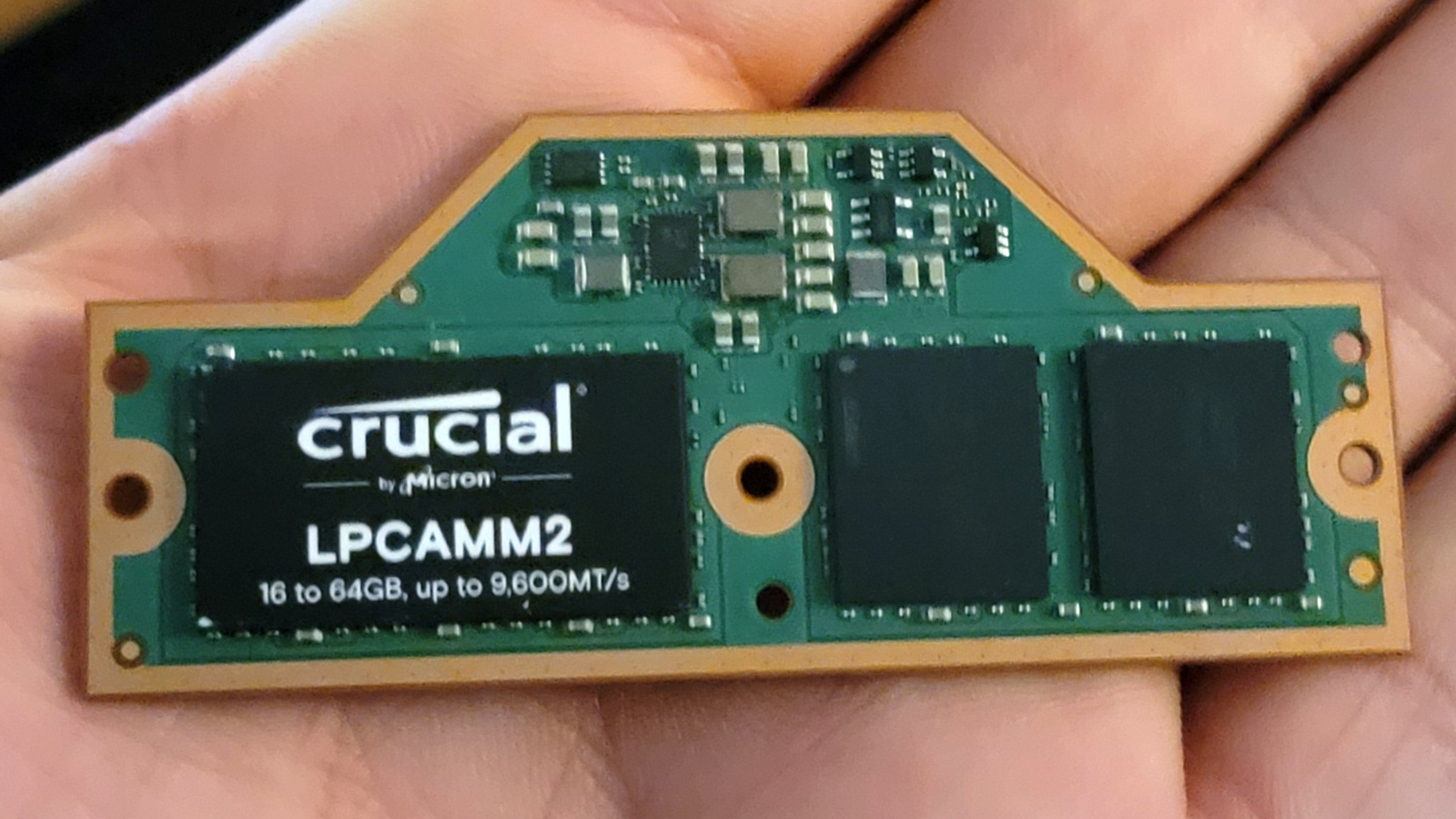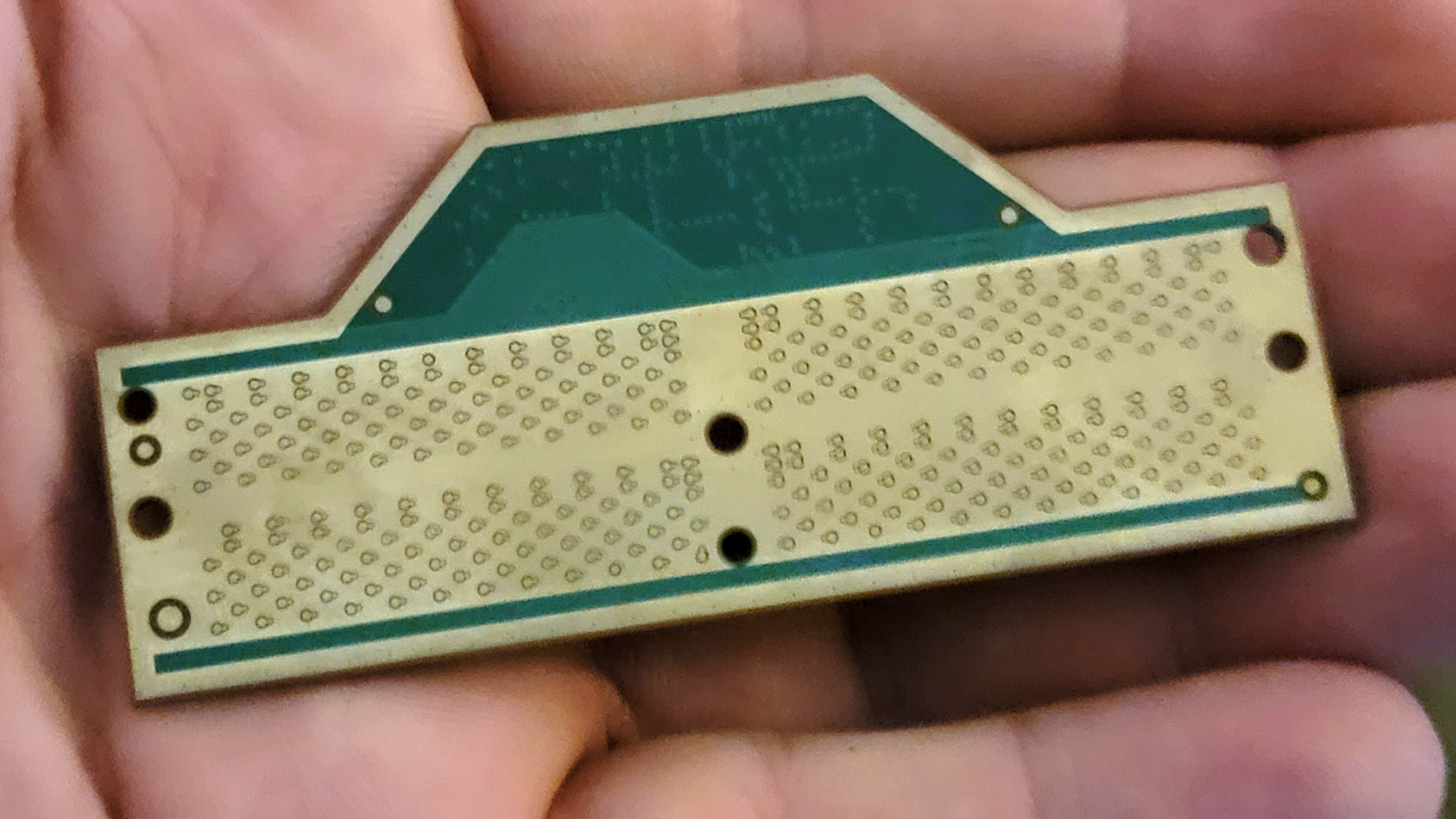Micron displays next-gen LPCAMM2 modules for laptops at CES 2024
Micron's LPCAMM2 memory modules smile for the camera.
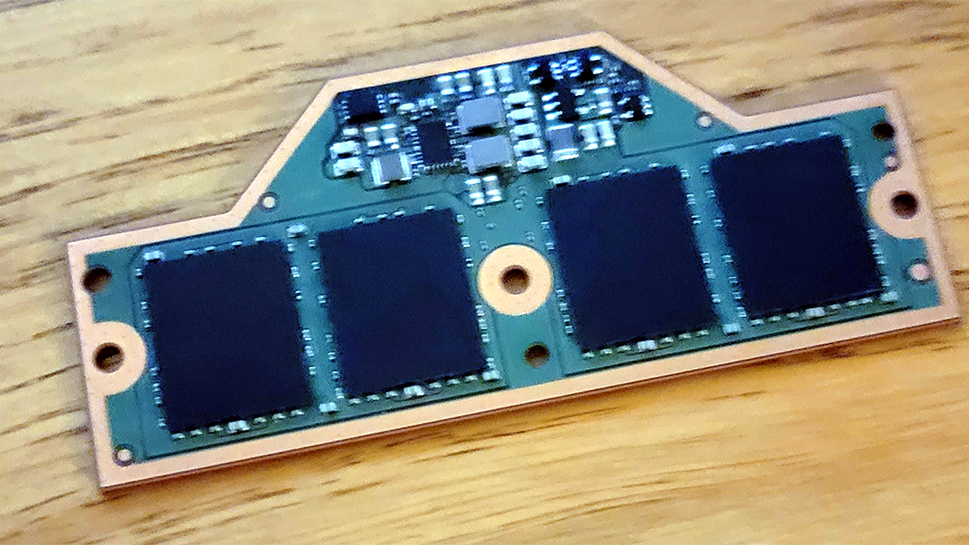
Micron is demonstrating its next-generation LPCAMM2 memory modules based on LPDDR5X memory at CES 2024, where our own Paul Alcorn grabbed pictures. As expected, a new low-power compression attached memory module (LPCAMM2) is significantly smaller than traditional SODIMMs used for laptops, yet provides higher performance at lower power.
Micron's LPCAMM2 are industry-standard memory modules that will be available in 16 GB, 32 GB, and 64 GB capacities as well as with speed bins of up to a 9600 MT/s data transfer rate. These modules are designed to replace conventional SODIMMs as well as soldered-down LPDDR5X memory subsystem while offering the best of both worlds: flexibility, repairability, and upgradeability of modular memory solutions as well as high performance and low power consumption of mobile DRAM.
Indeed, a Micron LPCAMM2 module is smaller than a traditional SODIMM despite the fact that it has a 128-bit memory interface and up to 64 GB of LPDDR5X memory onboard. Needless to say, the module is massively smaller than two SODIMM memory sticks that offer a 128-bit memory interface both in terms of height and in terms of physical footprint.
Yet, compression attached memory modules are obviously something new on the PC market and it is going to take some time before PC OEMs and end users get used to them. Meanwhile, the very fact that Micron demonstrates some of its LPCAMM2 memory modules with a Crucial sticker indicates that the company likely expects to sell such DRAM sticks both to PC makers and to the end users seeking upgrades.
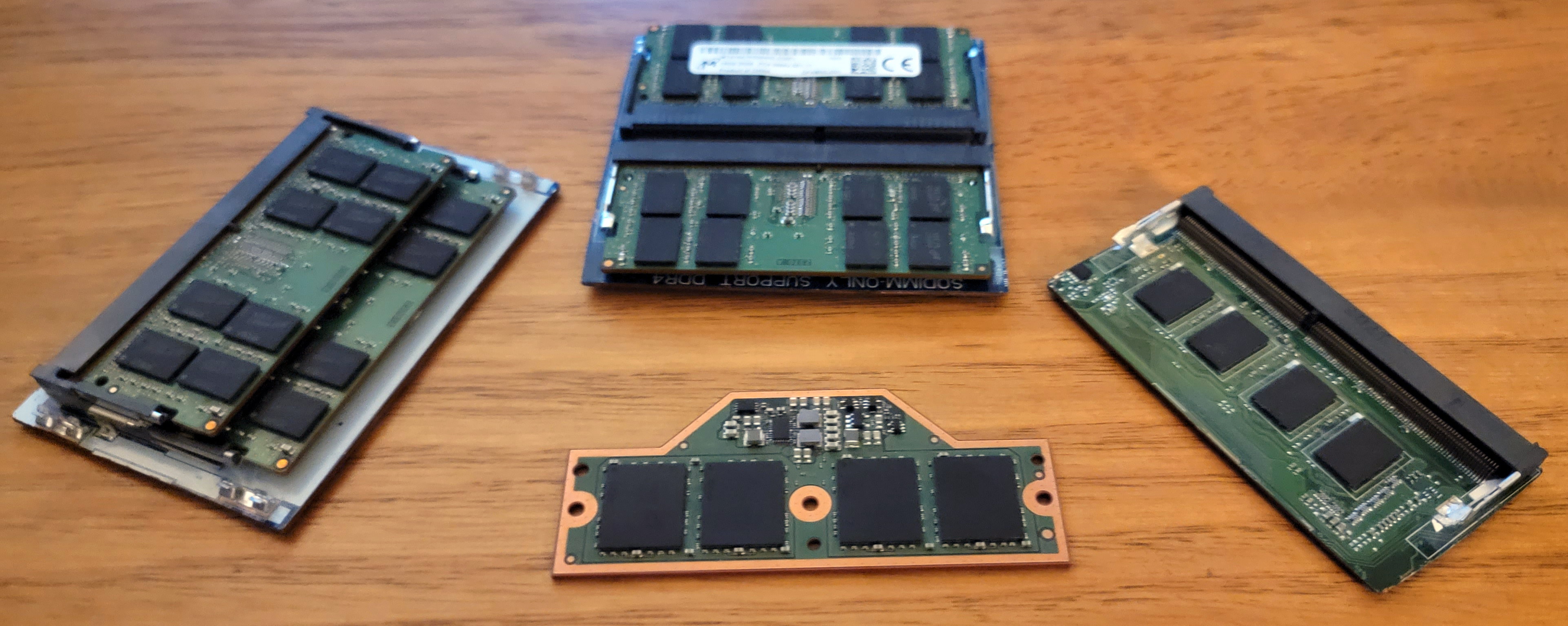
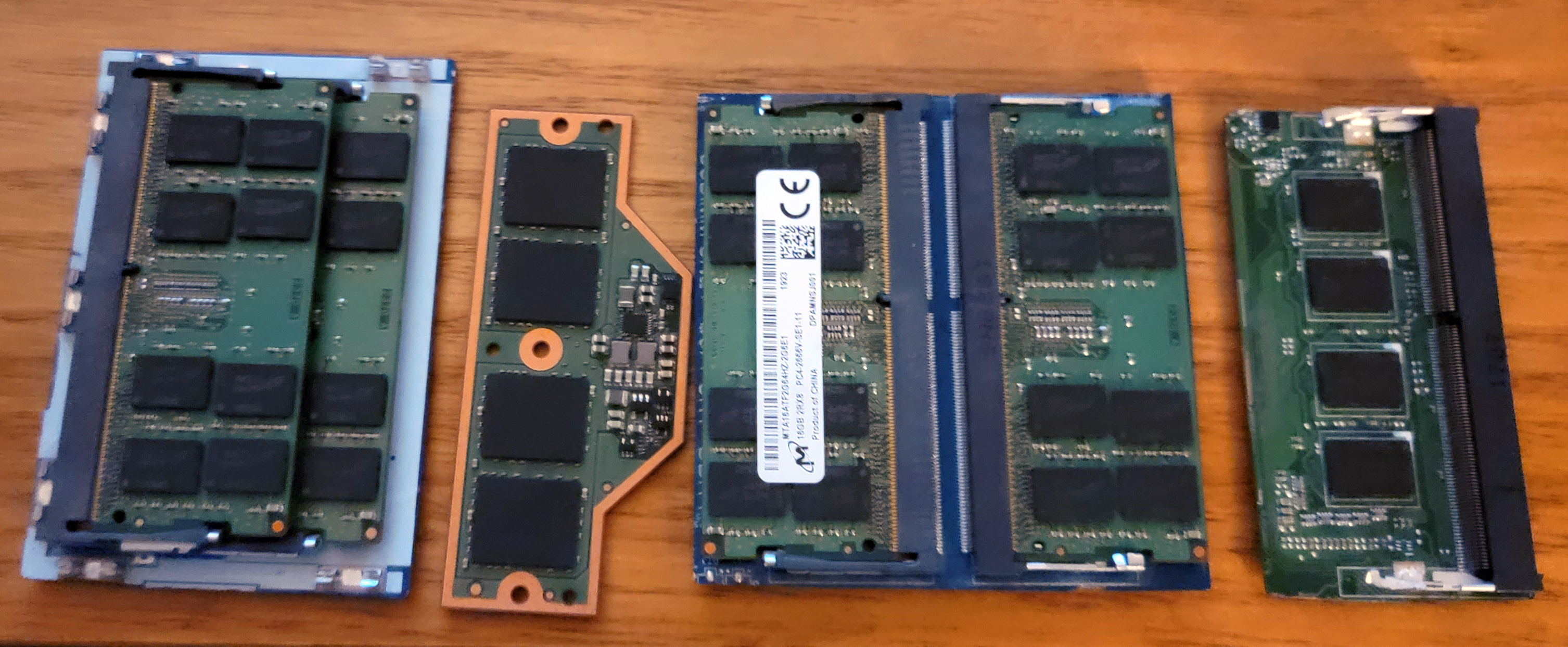

Pricing of such modules is another thing though. LPDDR5X is more expensive than commodity DDR5 memory and LPCAMM2 is a more complex device than a conventional SODIMM. Therefore, LPCAMM2 modules will be costlier than typical SODIMMs, which will make LPCAMM2 upgrades more expensive than SODIMM upgrades. Nonetheless, it will certainly be cheaper to upgrade a PC with an LPCAMM2 inside than replacing the whole PC with soldered-down LPDDR5X memory.
Get Tom's Hardware's best news and in-depth reviews, straight to your inbox.

Anton Shilov is a contributing writer at Tom’s Hardware. Over the past couple of decades, he has covered everything from CPUs and GPUs to supercomputers and from modern process technologies and latest fab tools to high-tech industry trends.
- Paul AlcornEditor-in-Chief
-
HideOut Hope they ad 24/48GB sticks, and maybe down the road 96GB. 24 could be a good spot for budget concious folks and 48 for more power users.Reply -
Notton I want to see this in more laptops and mini-PCs.Reply
I would also like to see this on mITX mobos. -
gg83 Why wouldn't this tech be used in desktops? Especially since CPUs and GPUs are requiring ever-increasing power. Would saving power on ram and maybe m.2 SSDs make a difference? Instead of a 1200w psu you'd only need a 1000w? Something like that?Reply -
Bluoper Reply
The reason why LPCAMM exists is not to reduce power draw but to reduce trace length and boost signal integrity allowing them to operate at higher frequencies. The reduction in power draw is essentially just a benefit of reduced trace length, when it comes to gpus the memory trace length is even shorter than camm, instead of using that boost to signal integrity to reduce power draw they use it to boost memory clocks. M.2 drives get power externally ( power is dealt with on the ssd rather than on the cpu/chipset ) instead of over traces so that isn't an option there, but in theory you could do that with standard dimms but it's more likely they'd keep power the same and just boost clocks like with gpus.gg83 said:Why wouldn't this tech be used in desktops? Especially since CPUs and GPUs are requiring ever-increasing power. Would saving power on ram and maybe m.2 SSDs make a difference? Instead of a 1200w psu you'd only need a 1000w? Something like that?
